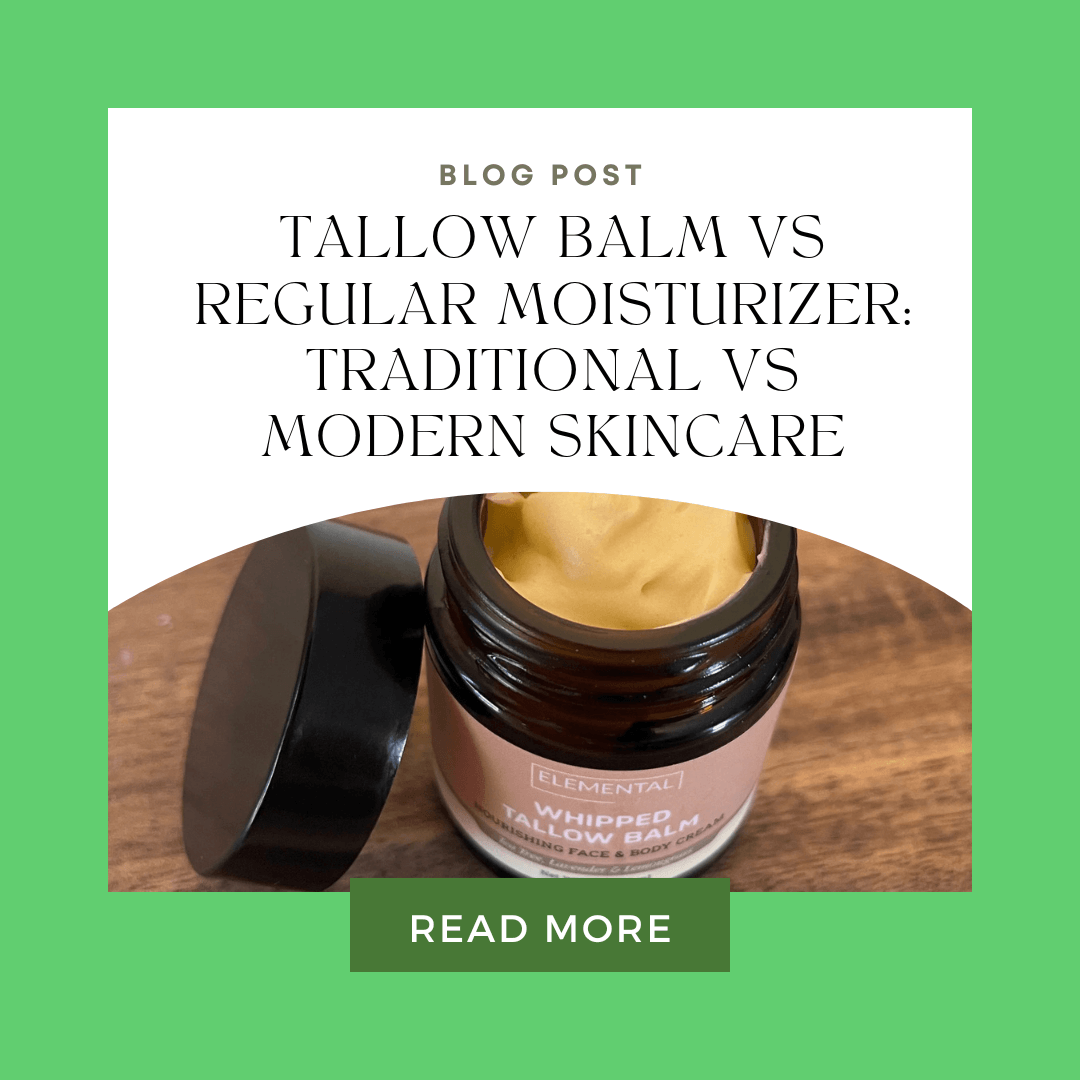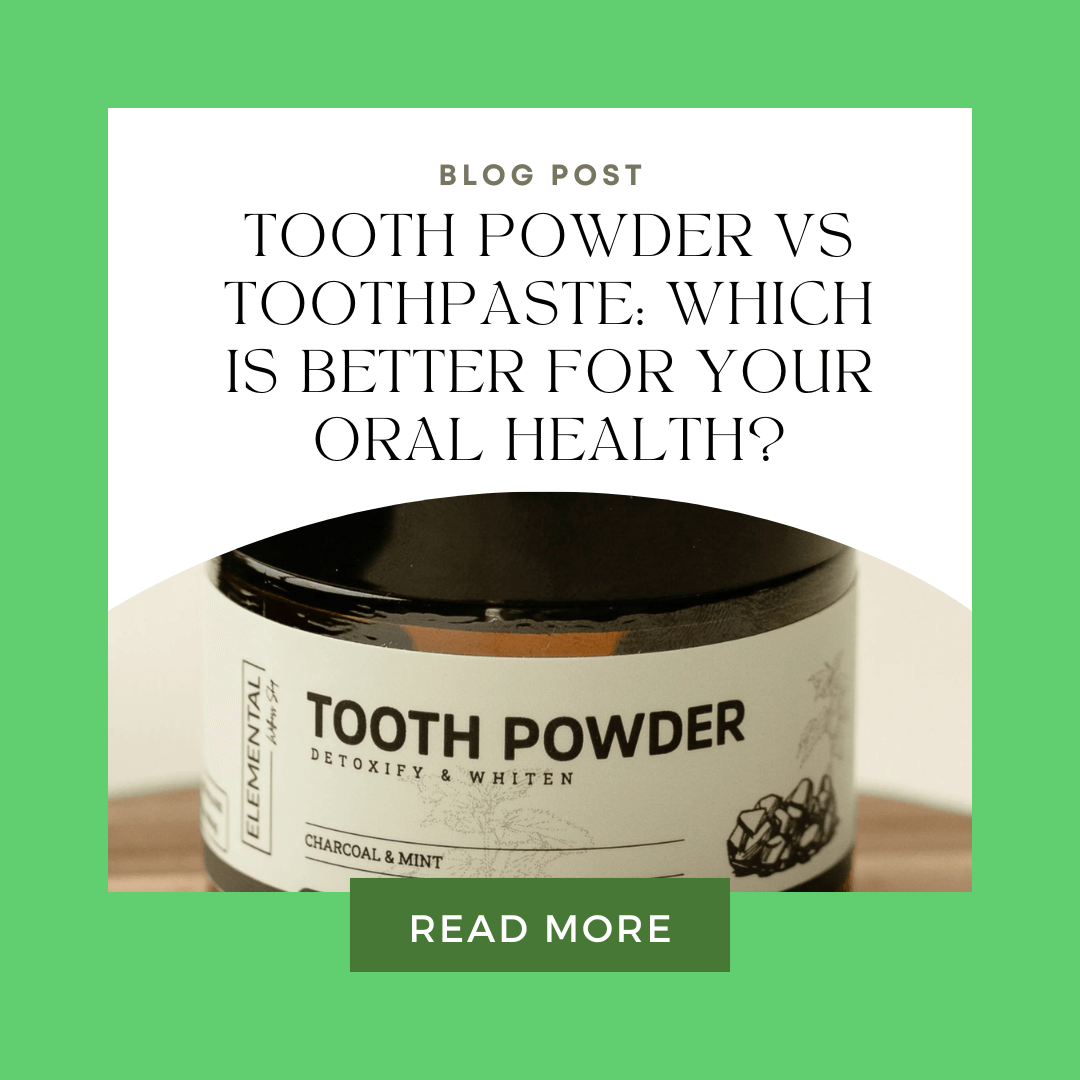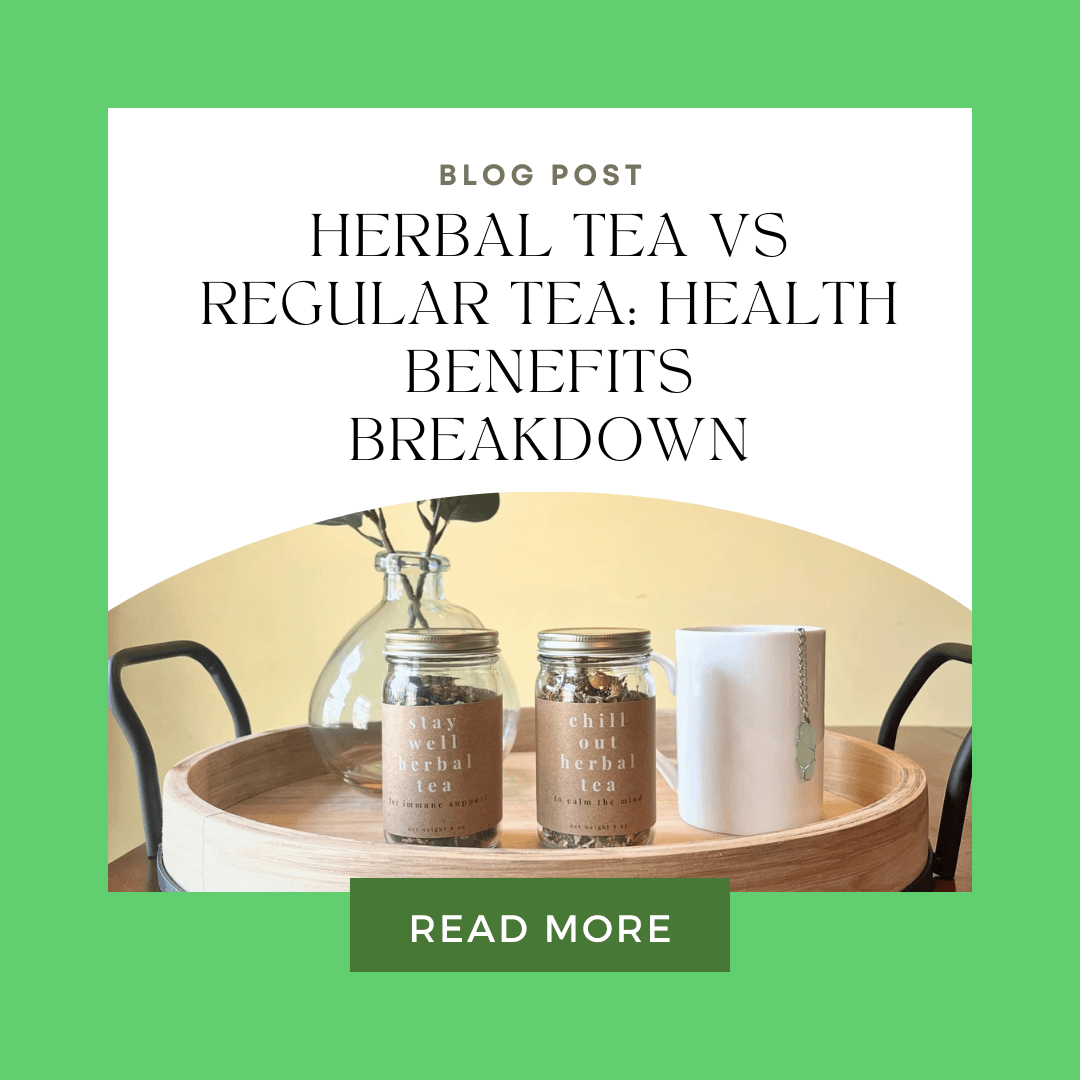Tallow Balm vs Regular Moisturizer: Traditional vs Modern Skincare in 2025
What if the best skincare ingredient was hiding in your grandmother's kitchen cabinet all along?
The $50 billion global moisturizer industry promises perfect skin through complex formulations and cutting-edge technology. Yet skin problems are more prevalent than ever, with conditions like eczema, dermatitis, and premature aging affecting millions despite access to hundreds of skincare products. This paradox has led many to rediscover traditional skincare wisdom—and one ingredient stands out for its remarkable effectiveness: grass-fed tallow.
As an Ayurvedic practitioner and natural wellness advocate, I've witnessed firsthand how returning to ancestral skincare practices can transform skin health. The molecular structure of grass-fed tallow is nearly identical to human sebum, making it one of nature's most biocompatible moisturizers. This comprehensive comparison examines traditional tallow-based skincare versus modern commercial moisturizers, revealing why our ancestors may have had the right approach all along.
What is Tallow? Understanding Nature's Perfect Moisturizer
Tallow represents one of the oldest and most effective skincare ingredients known to humanity, with a molecular structure that makes it uniquely compatible with human skin.
The Science Behind Tallow
Tallow is rendered fat from grass-fed cattle, processed through gentle heating to remove impurities while preserving beneficial compounds. Unlike plant-based oils, tallow's fatty acid profile closely mimics human sebum—the natural oil our skin produces for protection and moisture.
Molecular Compatibility: Human sebum contains approximately 45% oleic acid, 25% palmitic acid, and smaller amounts of stearic and linoleic acids. Grass-fed tallow contains nearly identical ratios of these same fatty acids, making it the most biocompatible moisturizer available.
Absorption Mechanism: Because tallow so closely resembles human sebum, it penetrates skin easily without clogging pores or leaving greasy residues. This compatibility allows active compounds to reach deeper skin layers where healing and regeneration occur.
Historical Use: Ancient Wisdom Validated
Archaeological evidence shows that ancient civilizations worldwide used animal fats for skincare and healing:
Ancient Egypt: Mummies were preserved using tallow-based preparations, and hieroglyphs depict the use of animal fats in beauty rituals.
Roman Empire: Wealthy Romans used rendered animal fats mixed with aromatic herbs for daily skincare and to prevent aging.
Traditional Chinese Medicine: Animal fats were valued for their ability to nourish "kidney yin"—the body's deep moisture and vitality.
Native American Cultures: Used buffalo and bear fat to protect skin from harsh weather and heal wounds.
European Traditions: Before the industrial revolution, rendered animal fats were the primary moisturizing agents in households across Europe.
Modern Revival: Why Tallow is Trending in 2025
Growing awareness of synthetic ingredient concerns, environmental sustainability, and the limitations of plant-based skincare has sparked renewed interest in traditional tallow skincare.
Scientific Validation: Modern research confirms what traditional cultures knew—animal-derived fats provide superior skin compatibility and therapeutic benefits compared to most plant oils.
Clean Beauty Movement: Consumers increasingly seek products with simple, recognizable ingredients rather than complex chemical formulations.
Sustainability Concerns: Using agricultural byproducts like tallow represents sustainable resource utilization rather than waste.
Quality Factors That Matter
Not all tallow provides equal benefits—sourcing and processing significantly impact effectiveness:
Grass-Fed vs Grain-Fed: Grass-fed cattle produce tallow with higher concentrations of vitamins A, D, E, and K, plus beneficial omega-3 fatty acids.
Rendering Methods: Traditional wet rendering preserves more nutrients than high-heat commercial processing.
Purification Standards: Proper filtering removes impurities while maintaining beneficial compounds.
Freshness: Like any natural fat, tallow quality deteriorates over time without proper storage.
At Elemental Wellness, our Whipped Tallow Balm uses only grass-fed Colorado cattle tallow, rendered using traditional methods to preserve maximum nutritional content and skin benefits.
Understanding Modern Moisturizers: The Industrial Approach
Contemporary moisturizers represent sophisticated industrial formulations designed for shelf stability, marketing appeal, and manufacturing efficiency rather than optimal skin health.
The Complex Chemistry of Commercial Moisturizers
Modern moisturizers typically contain 15-30 ingredients across several functional categories:
Humectants (Drawing Moisture):
- Hyaluronic acid attracts up to 1,000 times its weight in water
- Glycerin pulls moisture from the environment into skin
- Sodium PCA helps skin retain moisture
- Urea enhances skin's natural moisturizing factor
Emollients (Softening and Smoothing):
- Plant oils like jojoba, argan, and coconut oil provide fatty acids
- Silicones create immediate smoothness and slip
- Synthetic esters mimic natural skin lipids
- Petroleum derivatives provide occlusive barrier
Occlusives (Sealing Moisture):
- Petrolatum creates waterproof barrier
- Dimethicone forms protective film
- Shea butter provides natural occlusion
- Ceramides help repair skin barrier
Water: The Dilution Problem
Most commercial moisturizers contain 60-80% water, which creates several challenges:
Preservative Necessity: Water content requires antimicrobial preservatives to prevent bacterial and fungal growth.
Active Dilution: High water content dilutes beneficial ingredients, reducing their concentration and effectiveness.
Temporary Effects: Water evaporates quickly, providing only short-term hydration benefits.
Manufacturing Efficiency: Water is cheap and increases product volume, improving profit margins.
Common Industrial Ingredients and Concerns
Parabens: Widely used preservatives that mimic estrogen in the body and may disrupt hormonal balance.
Phthalates: Plasticizers that help products penetrate skin but may interfere with reproductive hormones.
Synthetic Fragrances: Often contain dozens of undisclosed chemicals that can trigger allergic reactions.
Sulfates: Create lathering action in cleansing moisturizers but can strip natural skin oils.
Silicones: Provide immediate smoothness but may prevent skin's natural functions and cause long-term dependency.
Manufacturing Priorities vs Skin Health
Industrial moisturizer production prioritizes:
Shelf Stability: Products must remain stable for 2-3 years in various conditions
Consistent Texture: Consumers expect identical feel and appearance every time
Cost Efficiency: Ingredients chosen for price rather than effectiveness
Marketing Appeal: Immediate sensory effects preferred over long-term benefits
Regulatory Compliance: Meeting minimal safety standards rather than optimizing health
This approach often conflicts with optimal skin health, which benefits from biocompatible ingredients, minimal processing, and support for natural skin functions.
Nutritional Profile Comparison: Nature vs Laboratory
The nutritional content of skincare ingredients significantly impacts their therapeutic value and long-term effects on skin health.
Tallow's Nutritional Powerhouse
Fatty Acid Profile Matching Human Sebum:
Oleic Acid (40-50%): Penetrates deeply into skin and supports barrier function. This monounsaturated fat is the primary component of human sebum.
Palmitic Acid (25-35%): Provides protective barrier properties and supports skin's natural antimicrobial functions.
Stearic Acid (15-25%): Offers conditioning properties and helps stabilize skin barrier function.
Linoleic Acid (2-5%): An essential fatty acid that supports skin barrier repair and reduces inflammation.
Fat-Soluble Vitamin Complex:
Vitamin A (Retinol): Supports skin cell renewal, collagen production, and natural exfoliation processes.
Vitamin D: Essential for skin immune function and cellular repair mechanisms.
Vitamin E (Tocopherols): Powerful antioxidant that protects against environmental damage and supports healing.
Vitamin K: Supports blood vessel health and may help with dark circles and skin healing.
Trace Minerals: Grass-fed tallow contains selenium, zinc, and other minerals essential for skin health.
Bioavailability Advantage: Because tallow so closely resembles human skin composition, these nutrients are readily absorbed and utilized by skin cells.
Commercial Moisturizer Nutrient Profile
Synthetic Vitamin Additions:
- Vitamins added artificially in forms that may not be optimally absorbed
- Often in concentrations too low for therapeutic benefit
- May degrade during processing and storage
- Lacking cofactors present in natural sources
Plant Oil Variations:
- Different fatty acid profiles than human sebum
- May contain beneficial compounds but in non-optimal ratios
- Often processed in ways that remove beneficial compounds
- Variable quality depending on sourcing and processing
Chemical Enhancement:
- Penetration enhancers may force absorption of unwanted chemicals
- Stabilizers prevent degradation but may interfere with natural processes
- Emulsifiers allow oil-water mixing but may disrupt skin barrier
Dilution Effects:
- High water content significantly dilutes active ingredient concentrations
- Preservatives necessary for water-based formulations may cause sensitivity
- Thickeners and texture agents take up formula space without providing benefits
Skin Compatibility and Absorption: The Biological Advantage
How well moisturizers work depends largely on their compatibility with skin's natural structure and processes.
Tallow's Superior Absorption Profile
Molecular Recognition: Skin recognizes tallow as similar to its own sebum, allowing easy penetration without triggering inflammatory responses.
Barrier Integration: Rather than sitting on skin's surface, tallow integrates into the lipid barrier, supporting natural protective functions.
Non-Comedogenic Reality: Despite being animal fat, properly rendered tallow doesn't clog pores because its composition matches natural sebum.
Deep Penetration: Fatty acids in tallow can reach deeper skin layers where regeneration and repair occur.
Natural Synergy: Works with skin's existing processes rather than overriding them.
Modern Moisturizer Absorption Variables
Formulation Dependencies: Effectiveness depends heavily on specific formulation rather than inherent ingredient properties.
Barrier Conflicts: Some ingredients may disrupt natural skin barrier function while providing temporary benefits.
Surface Effects: Many modern ingredients provide immediate surface improvement without supporting deeper skin health.
Synthetic Enhancement: Chemical penetration enhancers may force absorption but can cause irritation or sensitivity.
Compatibility Issues: Complex formulations may contain conflicting ingredients that reduce overall effectiveness.
Long-term Skin Health Implications
Tallow Benefits:
- Supports skin's natural functions rather than replacing them
- Provides building blocks for skin repair and regeneration
- Doesn't create dependency or disrupt natural oil production
- Strengthens skin barrier over time
Commercial Product Considerations:
- May create dependency on external moisturization
- Some ingredients can thin skin or disrupt natural processes over time
- Synthetic ingredients may accumulate in tissues
- Complex formulations increase risk of sensitization
Anti-Aging Properties: Traditional vs Modern Approaches
Both tallow and modern moisturizers can support healthy aging, but through different mechanisms and with different long-term implications.
Tallow's Natural Anti-Aging Compounds
Vitamin A (Natural Retinol):
- Supports natural cell turnover and collagen production
- Helps reduce fine lines and improve skin texture
- Works gently without the irritation of synthetic retinoids
- Provides sustained benefits with regular use
Antioxidant Complex:
- Vitamin E protects against free radical damage
- Selenium supports antioxidant enzyme function
- Natural compounds work synergistically for enhanced protection
- Prevents oxidative stress that accelerates aging
Collagen Support:
- Provides amino acids and cofactors needed for collagen synthesis
- Supports skin's structural protein maintenance
- Helps maintain skin firmness and elasticity naturally
- Works from within rather than providing temporary tightening
Moisture Retention:
- Supports skin's natural moisture-binding capacity
- Helps prevent dehydration that accentuates aging signs
- Maintains plump, healthy appearance long-term
- Doesn't create dependency on external hydration
Modern Anti-Aging Approaches
Synthetic Retinoids:
- Provide dramatic short-term improvements in fine lines
- May cause irritation, dryness, and photosensitivity
- Can thin skin over time with excessive use
- Require careful application and sun protection
Peptide Technology:
- Signal cells to produce more collagen
- May provide temporary firming effects
- Long-term safety and effectiveness still being studied
- Often expensive with variable results
Alpha Hydroxy Acids (AHAs):
- Exfoliate surface skin for smoother appearance
- Can improve texture and reduce surface pigmentation
- May increase photosensitivity and irritation
- Require careful use to avoid over-exfoliation
Hyaluronic Acid:
- Provides immediate plumping and hydration
- Creates temporary improvement in fine line appearance
- May draw moisture from deeper skin layers in dry environments
- Benefits disappear when use is discontinued
Sustainable vs Quick-Fix Approaches
Tallow Philosophy: Support skin's natural regeneration and maintenance processes for long-term health and beauty.
Modern Approach: Often focuses on quick, visible results that may require continued use or increasingly aggressive treatments.
Aging Gracefully: Tallow supports healthy aging that maintains skin integrity, while some modern approaches may accelerate aging in the long term.
Specific Skin Conditions: Choosing the Right Approach
Different skin conditions benefit from different approaches, making it important to understand which option best serves specific needs.
Dry Skin: Deep Moisture vs Surface Hydration
Tallow Solution:
- Penetrates deeply to address moisture loss at its source
- Supports skin barrier repair for long-term improvement
- Provides sustained moisture without frequent reapplication
- Doesn't disrupt skin's natural oil production
Commercial Approach:
- Humectants provide immediate surface hydration
- May require frequent reapplication as effects are temporary
- Some ingredients can eventually worsen dryness by disrupting natural functions
- Often effective for immediate relief but less sustainable long-term
Best Strategy: Severe dryness often responds better to tallow's deep nourishment, while mild dryness may improve with either approach.
Sensitive Skin: Simplicity vs Complexity
Tallow Advantages:
- Single ingredient reduces allergy and sensitivity risk
- No preservatives, fragrances, or synthetic additives
- Naturally anti-inflammatory properties
- Less likely to cause reactive responses
Commercial Considerations:
- Complex formulations increase sensitization risk
- Even "hypoallergenic" products may contain problematic ingredients
- Preservatives necessary in water-based products can trigger reactions
- Patch testing essential before use
Elemental Wellness Advantage: Our pure tallow balm provides maximum gentleness for reactive skin.
Acne-Prone Skin: Breaking the Myths
Common Misconception: "Animal fat will clog pores and cause breakouts."
Scientific Reality: Properly rendered tallow has a comedogenic rating of 2 (low), while many plant oils rate higher.
Why Tallow Often Helps Acne:
- Balances skin's natural oil production
- Provides antimicrobial fatty acids
- Doesn't disrupt skin's pH balance
- Supports healing of existing blemishes
Commercial Product Challenges:
- Many ingredients can clog pores or irritate acne-prone skin
- Harsh ingredients may trigger increased oil production
- Complex formulations make it difficult to identify problem ingredients
Application Strategy: Use very thin layers and allow proper absorption time.
Mature Skin: Nourishment vs Intervention
Tallow's Mature Skin Benefits:
- Rich nutrient profile supports aging skin's increased needs
- Gentle enough for daily use on delicate mature skin
- Supports skin's natural repair processes
- Provides deep nourishment without irritation
Modern Anti-Aging Options:
- Targeted ingredients for specific aging concerns
- May provide more dramatic short-term results
- Often require careful introduction and monitoring
- Can be harsh on sensitive mature skin
Balanced Approach: Many people find that tallow provides excellent daily nourishment while targeted treatments address specific concerns.
Eczema and Dermatitis: Healing vs Managing
Tallow's Therapeutic Properties:
- Anti-inflammatory fatty acids help calm irritated skin
- Supports skin barrier repair essential in eczema management
- No synthetic ingredients that might trigger flares
- Traditional use for inflammatory skin conditions
Medical Moisturizer Benefits:
- Specifically formulated for compromised skin barriers
- Clinical testing for safety and effectiveness
- May contain targeted ingredients for specific conditions
- Often recommended by dermatologists
Integrated Approach: Many people successfully use tallow for daily maintenance while using medical products during active flares.
Environmental and Ethical Considerations
Choosing between tallow and commercial moisturizers involves consideration of environmental impact and ethical implications.
Tallow's Environmental Profile
Agricultural Byproduct Utilization:
- Uses parts of cattle that might otherwise be discarded
- Reduces waste in agricultural systems
- No additional land use required specifically for cosmetic production
- Supports complete animal utilization
Minimal Processing Requirements:
- Simple rendering process requires minimal energy
- No complex chemical synthesis or manufacturing
- Biodegradable packaging options readily available
- Local sourcing possible in many regions
Carbon Footprint Considerations:
- Lower transportation weight than water-based products
- Concentrated formula reduces packaging needs
- Long shelf life reduces spoilage and waste
- Simple ingredients require less industrial processing
Sustainability Practices:
- Grass-fed systems can be carbon neutral or negative
- Supports regenerative agriculture practices
- Promotes biodiversity in grazing systems
- Maintains traditional farming methods
Commercial Moisturizer Environmental Impact
Resource Intensive Production:
- Complex manufacturing processes require significant energy
- Multiple ingredient sourcing from around the world
- Chemical synthesis processes may produce toxic byproducts
- Extensive packaging and shipping requirements
Packaging Concerns:
- Plastic containers rarely recycled effectively
- Multiple product needs increase packaging waste
- Pump dispensers contain multiple materials difficult to separate
- Marketing packaging often excessive and wasteful
Ingredient Sourcing Issues:
- Some plant oils contribute to deforestation
- Palm oil in cosmetics linked to habitat destruction
- Synthetic ingredients may have unknown environmental persistence
- Global supply chains increase transportation emissions
Water Usage:
- High water content in products
- Manufacturing processes require significant water use
- Water treatment needed for chemical byproducts
- Packaging and cleaning processes use additional water
Ethical Considerations
Animal Welfare Factors:
- Grass-fed cattle typically have better welfare conditions
- Supporting traditional farming methods vs factory farming
- Complete animal utilization shows respect for life given
- Personal dietary choices may influence comfort with animal-derived skincare
Labor and Social Justice:
- Local sourcing supports regional economies
- Traditional rendering methods support artisan skills
- Some commercial ingredients sourced from regions with labor concerns
- Fair trade considerations in ingredient selection
Cultural Sensitivity:
- Respecting traditional knowledge and practices
- Supporting indigenous and traditional communities
- Avoiding appropriation while honoring wisdom
- Choosing culturally appropriate products for personal values
Cost Analysis: True Value Assessment
Understanding the real cost of skincare involves looking beyond initial purchase price to long-term value and effectiveness.
Initial Investment Comparison
Tallow Balm Costs:
- Quality tallow balm: $15-40 for 2-4 ounce container
- Higher upfront cost per ounce than many commercial moisturizers
- Artisan and small-batch products typically cost more
- Premium grass-fed sourcing increases costs
Commercial Moisturizer Range:
- Basic moisturizers: $3-15 for 6-12 ounce containers
- Premium brands: $20-100+ for 1-2 ounce containers
- Anti-aging formulations: $30-200+ for specialized products
- Department store vs drugstore significant price variations
Usage and Longevity Analysis
Tallow Efficiency:
- Very small amounts (pea-sized) effective for face
- One container typically lasts 3-6 months with daily use
- Multi-purpose use (face, body, hands, lips) increases value
- No need for separate products for different areas
Commercial Product Usage:
- May require larger amounts for effectiveness
- Separate products needed for different concerns (day/night, anti-aging, etc.)
- More frequent reapplication often necessary
- Containers typically last 1-3 months depending on size
Hidden Costs and Considerations
Tallow Additional Expenses:
- May need adjustment period with temporary breakouts
- Initial learning curve for optimal application
- Limited availability may increase shipping costs
- Quality variations require careful sourcing
Commercial Product Hidden Costs:
- Multiple products needed for complete routine
- Potential skin sensitization requiring medical treatment
- Frequent repurchasing due to shorter effectiveness periods
- Trial and error costs finding suitable products
Long-term Value Calculation
Cost Per Application:
- Quality tallow balm: approximately $0.20-0.30 per application
- Commercial moisturizer: $0.15-0.50+ per application
- Multi-product routines: $1.00+ per complete application
- Professional treatments for problem skin: $50-200+ per session
Effectiveness Factors:
- Tallow's biocompatibility may reduce need for additional products
- Commercial products may require layering or supplementation
- Long-term skin health impacts overall skincare costs
- Prevention vs treatment cost considerations
Travel and Convenience Costs
Tallow Travel Benefits:
- Concentrated formula takes minimal luggage space
- No liquid restrictions for air travel
- Multi-purpose use reduces number of products needed
- Long shelf life reduces replacement frequency during travel
Commercial Product Travel:
- Multiple products require more space and weight
- Liquid restrictions limit container sizes
- Spill risk with liquid formulations
- Need for travel-sized versions increases costs
How to Use Tallow Balm Effectively: Mastering Traditional Skincare
Proper application technique ensures optimal results and helps avoid common mistakes that might lead to dissatisfaction with tallow-based skincare.
Step-by-Step Application Method
Skin Preparation:
- Cleanse skin with gentle, natural cleanser
- Pat dry, leaving skin slightly damp (not dripping)
- Ensure hands are clean before handling tallow
Warming and Application:
- Take a very small amount (rice grain to pea sized for face)
- Warm between fingertips until it begins to melt
- Pat gently onto skin in small sections
- Allow body heat to help spread and absorb
- Massage gently with light pressure until absorbed
Timing and Frequency:
- Morning: Apply 10-15 minutes before makeup or sun exposure
- Evening: Apply as final step in skincare routine
- Start with once daily, increase as skin adjusts
- Less is more—over-application can cause greasiness
Common Mistakes and Solutions
Using Too Much Product:
- Problem: Greasy feeling, slow absorption, potential breakouts
- Solution: Start with tiny amounts, build coverage gradually
- Tip: You can always add more, but it's hard to remove excess
Applying to Completely Dry Skin:
- Problem: Difficult spreading, uneven coverage
- Solution: Apply to slightly damp skin for better distribution
- Enhancement: Spritz with thermal water or hydrosol first
Expecting Immediate Dramatic Results:
- Problem: Disappointment when results differ from commercial products
- Reality: Natural products often show gradual, sustained improvement
- Timeline: Allow 4-6 weeks for skin adjustment and optimal results
Improper Storage:
- Problem: Rancidity, texture changes, contamination
- Solution: Store in cool, dry place away from direct sunlight
- Best Practices: Use clean hands, close container promptly
Transition Period Management
Weeks 1-2: Initial Adjustment:
- Skin may feel different as it adjusts from synthetic ingredients
- Possible temporary increase in breakouts as skin detoxifies
- Texture may seem unusual compared to familiar products
- Continue use unless severe reactions occur
Weeks 3-4: Stabilization:
- Skin begins adapting to natural moisturization
- Oil production starts balancing naturally
- Improved texture and appearance become noticeable
- Application technique becomes more comfortable
Month 2+: Optimization:
- Skin reaches optimal balance with tallow supplementation
- Natural radiance and improved texture are apparent
- Reduced need for other skincare products
- Established routine feels natural and sustainable
Complementary Practices
Gentle Cleansing: Use mild, natural cleansers that don't strip skin's protective barrier.
Natural Exfoliation: Weekly gentle exfoliation with natural scrubs or dry brushing enhances tallow absorption.
Hydrosol Misting: Natural floral waters provide light hydration that enhances tallow application.
Facial Massage: Gentle massage during application improves circulation and absorption.
Internal Support: Adequate water intake and nutrition support skin health from within.
Addressing Common Concerns: Facts vs Fiction
Many people have misconceptions about tallow based on outdated information or cultural biases. Let's address these concerns with scientific facts.
"Tallow Will Make Me Smell Like Beef"
The Reality: Properly rendered, pure tallow has no noticeable odor when fresh and well-processed.
Why This Myth Persists: Poor-quality rendering or old tallow can develop unpleasant odors, but this isn't inherent to the ingredient.
Quality Indicators: Fresh, properly rendered tallow should be nearly odorless or have a very mild, clean scent.
Our Standards: We use traditional rendering methods that eliminate any animal odors while preserving beneficial compounds.
"Animal Fat on Skin is Unsanitary"
Historical Evidence: Humans have used animal fats for skincare for thousands of years without sanitation issues.
Modern Processing: Proper rendering temperatures eliminate any potential pathogens while preserving beneficial nutrients.
Comparison: Animal fats undergo less processing than many synthetic skincare ingredients.
Safety Record: Traditional use demonstrates safety when properly processed and stored.
"Tallow Will Clog My Pores"
Scientific Facts: Properly rendered tallow has a comedogenic rating of 2 (low), while many plant oils rate higher.
Composition Advantage: Tallow's similarity to human sebum means it integrates with natural skin functions rather than blocking them.
Individual Variation: Some people may experience initial adjustment as skin rebalances oil production.
Application Importance: Proper technique with small amounts prevents any pore-clogging issues.
"It's Not Suitable for Modern Lifestyles"
Convenience Reality: Once you master the technique, tallow application is as quick as any moisturizer.
Multi-Purpose Benefits: One product serves multiple functions, simplifying routines.
Travel Advantages: Solid format eliminates spill concerns and liquid restrictions.
Time Efficiency: Effective hydration often reduces need for multiple products.
"Plant-Based is Always Better"
Biocompatibility Factor: Tallow's similarity to human sebum often makes it more effective than plant oils.
Nutrient Density: Animal fats provide fat-soluble vitamins in forms readily used by skin.
Individual Needs: Some people respond better to plant-based products, others to animal-derived ingredients.
Ethical Choices: Personal values should guide skincare choices, and both approaches can be ethical.
"It's Not Suitable for Vegans"
Respectful Acknowledgment: Veganism is a personal choice we completely respect.
Alternative Options: We offer plant-based alternatives while acknowledging tallow's unique benefits.
Individual Values: Skincare choices should align with personal beliefs and values.
Educational Purpose: Sharing information about traditional practices doesn't advocate for any particular lifestyle.
Quality Factors and Sourcing: Ensuring Superior Tallow
Understanding quality factors helps you choose the most effective and safe tallow-based skincare products.
Grass-Fed vs Grain-Fed: The Nutritional Difference
Grass-Fed Advantages:
- Higher concentrations of vitamins A, D, E, and K
- Better omega-3 to omega-6 fatty acid ratios
- Higher levels of conjugated linoleic acid (CLA)
- More antioxidants and beneficial compounds
- Better environmental and animal welfare practices
Nutritional Impact: Grass-fed tallow contains up to 5 times more vitamin E and significantly higher levels of other fat-soluble vitamins.
Seasonal Variations: Spring grass produces the highest nutrient levels, while winter grass-fed tallow may have lower vitamin content.
Certification Standards: Look for products that specify grass-fed sourcing with third-party verification.
Rendering Methods: Traditional vs Industrial
Traditional Wet Rendering:
- Lower temperatures preserve more nutrients
- Longer process times ensure purity
- Maintains natural color and texture
- Preserves beneficial compounds
Industrial Dry Rendering:
- Higher temperatures for efficiency
- May denature some beneficial compounds
- Often used for lower-grade applications
- Less suitable for skincare applications
Our Approach: We use traditional wet rendering methods at low temperatures to preserve maximum nutritional content.
Purity and Testing Standards
Contaminant Testing: Quality tallow should be tested for heavy metals, pesticides, and other environmental contaminants.
Microbiological Safety: Proper rendering eliminates pathogens, but testing confirms safety.
Rancidity Prevention: Fresh rendering and proper storage prevent oxidation and rancidity.
Third-Party Verification: Independent testing provides assurance of quality and purity claims.
Storage and Shelf Life
Optimal Conditions: Cool, dark, dry storage extends shelf life and maintains quality.
Natural Preservation: Vitamin E content provides natural antioxidant protection.
Shelf Life Expectations: Properly stored, pure tallow maintains quality for 12-24 months.
Quality Indicators: Fresh tallow should be white to cream colored with mild or no odor.
Sourcing Transparency
Farm-to-Product Traceability: Quality producers should be able to trace their tallow back to specific farms and animals.
Regional Sourcing: Local sourcing often provides fresher products and supports regional agriculture.
Seasonal Availability: Natural variations in grass quality affect tallow nutrition throughout the year.
Relationship Building: Establishing relationships with producers ensures consistent quality and ethical practices.
Frequently Asked Questions: Expert Guidance
Is tallow safe for all skin types?
Tallow is generally safe for most skin types due to its biocompatibility with human skin. However, those with beef allergies should avoid tallow products. People with very sensitive skin should patch test before full use, though reactions are rare due to tallow's similarity to natural sebum.
How long does tallow balm last once opened?
Properly stored tallow balm maintains quality for 12-18 months after opening. Store in a cool, dry place away from direct sunlight. The natural vitamin E content provides antioxidant protection, but products should be discarded if they develop off odors or change color significantly.
Can I use tallow if I'm allergic to beef?
People with beef allergies should generally avoid tallow products, as proteins that trigger allergic reactions may remain in rendered fat. However, some people with mild beef sensitivities tolerate highly purified tallow. Consult with an allergist before using if you have known beef allergies.
Will tallow balm make me break out?
Properly rendered tallow rarely causes breakouts due to its low comedogenic rating and similarity to human sebum. Some people may experience initial adjustment breakouts as skin rebalances oil production, but this typically resolves within 2-4 weeks. Using very small amounts and proper application technique minimizes any risk.
How is tallow different from other animal fats?
Tallow (from cattle) has a fatty acid profile most similar to human sebum, making it ideal for skincare. Lard (from pigs) has different fatty acid ratios and may not absorb as well. Duck fat and other animal fats have their own unique compositions but aren't typically used for skincare due to different molecular structures.
Can pregnant women use tallow balm?
Tallow balm is generally safe during pregnancy, as it contains natural nutrients that support skin health. The vitamins A, D, E, and K in tallow are beneficial during pregnancy when skin often becomes more sensitive. However, pregnant women should consult healthcare providers before making significant changes to skincare routines.
What's the difference between raw and rendered tallow?
Raw tallow contains impurities, water, and cellular material that must be removed through rendering. Rendered tallow has been heated and filtered to create pure, stable fat suitable for skincare. Only properly rendered tallow should be used for cosmetic purposes—raw tallow can spoil quickly and may contain bacteria.
Can I make my own tallow balm at home?
Yes, but proper rendering requires knowledge of safe temperatures and techniques. Home rendering should reach 240°F to ensure purity and safety. Quality starts with sourcing grass-fed fat from reputable suppliers. However, purchasing professionally rendered tallow ensures consistent quality and safety standards.
Our Recommendation: Experience Traditional Skincare Excellence
Based on extensive research, traditional wisdom, and modern understanding of skin health, here's our guidance for optimal skincare:
Best Overall Choice: Elemental Wellness Whipped Tallow Balm
Our carefully crafted tallow balm represents the perfect balance of traditional wisdom and modern quality standards.
Why It's Superior:
- Sourced from grass-fed Colorado cattle for maximum nutrition
- Traditional wet rendering preserves beneficial compounds
- Whipped texture for easier application and absorption
- Third-party tested for purity and safety
- Supports local, sustainable agriculture
Best For: All skin types, particularly those seeking natural alternatives to synthetic skincare products.
Quality Assurance Standards
Sourcing Transparency: We work directly with Colorado ranchers who practice regenerative agriculture and ethical animal husbandry.
Processing Excellence: Our traditional rendering methods preserve maximum nutritional content while ensuring purity and safety.
Testing Protocols: Every batch is tested for purity, with certificates of analysis available upon request.
Freshness Guarantee: We render in small batches to ensure maximum freshness and potency.
Best For Different Skin Types
Dry Skin: Tallow provides deep, lasting moisture that synthetic products often can't match.
Sensitive Skin: Single-ingredient simplicity reduces reaction risk while providing gentle nourishment.
Mature Skin: Rich vitamin content supports skin's changing needs as it ages.
Problem Skin: Biocompatibility often helps balance skin function better than complex formulations.
How to Start Your Tallow Journey
Week 1: Begin with evening application only, using very small amounts
Week 2: Add morning application if comfortable, continue with minimal amounts
Week 3-4: Increase amount slightly as skin adjusts and absorption improves
Month 2+: Enjoy balanced, healthy skin supported by nature's perfect moisturizer
Complementary Approach
While we believe tallow offers superior benefits for most people, skincare is personal. Consider:
Starting Point: Use tallow as your primary moisturizer
Targeted Treatments: Add specific treatments for particular concerns if needed
Seasonal Adjustments: You may need slightly more or less depending on climate
Individual Response: Pay attention to your skin's unique needs and responses
Conclusion: Embracing Ancestral Wisdom for Modern Skin Health
The evidence strongly suggests that traditional tallow-based skincare offers significant advantages over most commercial moisturizers for long-term skin health. The molecular compatibility with human sebum, rich nutritional profile, and thousands of years of safe use make tallow a compelling choice for those seeking optimal skincare.
Key Advantages of Tallow:
- Nearly identical composition to human sebum ensures optimal absorption
- Rich in fat-soluble vitamins that support skin health and repair
- Single ingredient simplicity reduces sensitivity and reaction risks
- Sustainable production using agricultural byproducts
- Multi-purpose effectiveness reduces need for multiple products
When Tallow Makes Sense:
- You prefer natural, traditional approaches to health and beauty
- You're seeking alternatives to synthetic skincare ingredients
- You want to reduce environmental impact of personal care choices
- You value simplicity and effectiveness over marketing complexity
- You're interested in supporting sustainable agriculture practices
Quality Considerations: Success with tallow depends heavily on sourcing and processing quality. Choose products from reputable suppliers who prioritize grass-fed sourcing and traditional rendering methods.
Individual Factors: While tallow works excellently for most people, individual skin needs vary. Those with specific skin conditions or sensitivities should consider their unique requirements when choosing skincare approaches.
Cultural and Personal Values: Skincare choices should align with personal values regarding animal products, environmental concerns, and cultural practices. We respect all perspectives while sharing information about traditional options.
Start Your Natural Skincare Journey: Experience the difference traditional approaches can make with our Whipped Tallow Balm. Made with grass-fed Colorado tallow using time-honored methods, it provides comprehensive skin nourishment without synthetic additives.
Your skin is your body's largest organ, and what you put on it matters as much as what you put in your body. Choosing traditional, biocompatible skincare like tallow supports your skin's natural functions while connecting you to ancestral wisdom that sustained healthy, beautiful skin for millennia.
Rediscover what your great-grandmother knew about skincare—sometimes the best solutions are the ones that have worked for thousands of years.
Transform your skincare routine with our premium grass-fed Whipped Tallow Balm, crafted with traditional methods and modern quality standards for optimal skin health.





